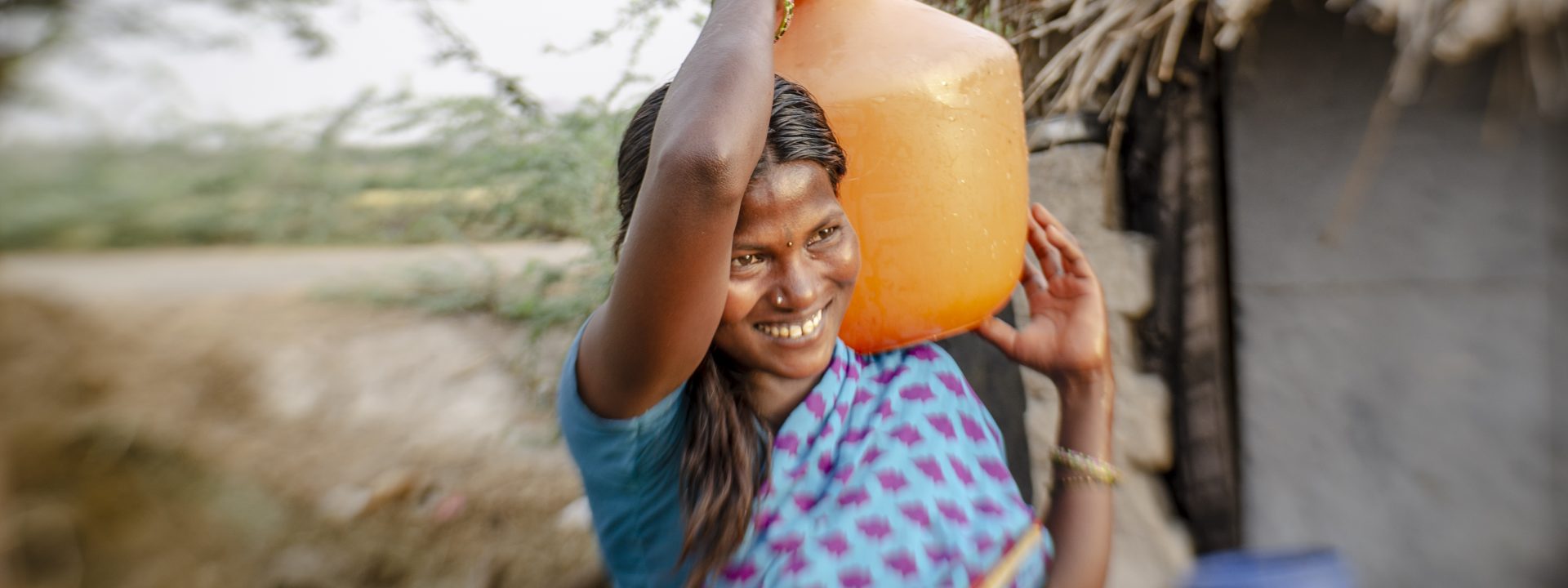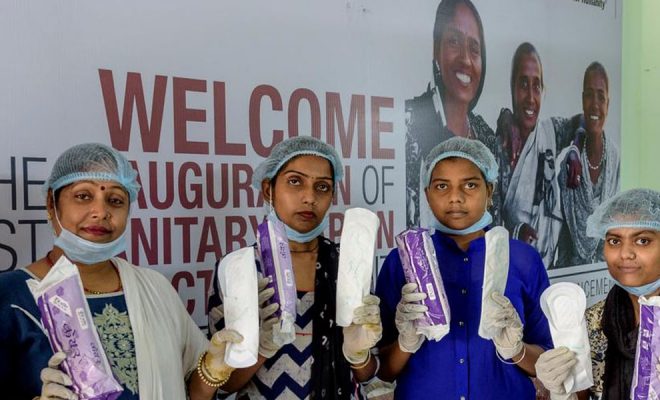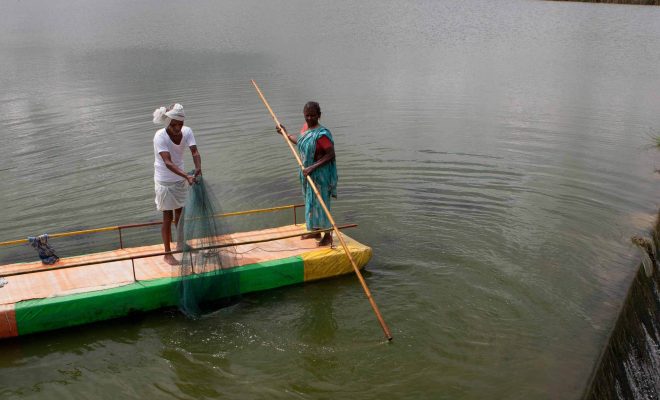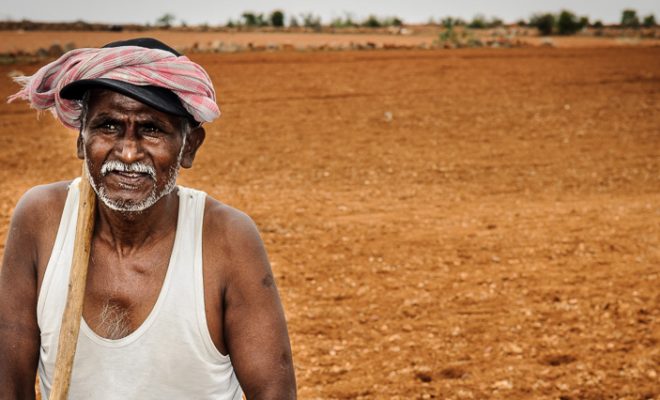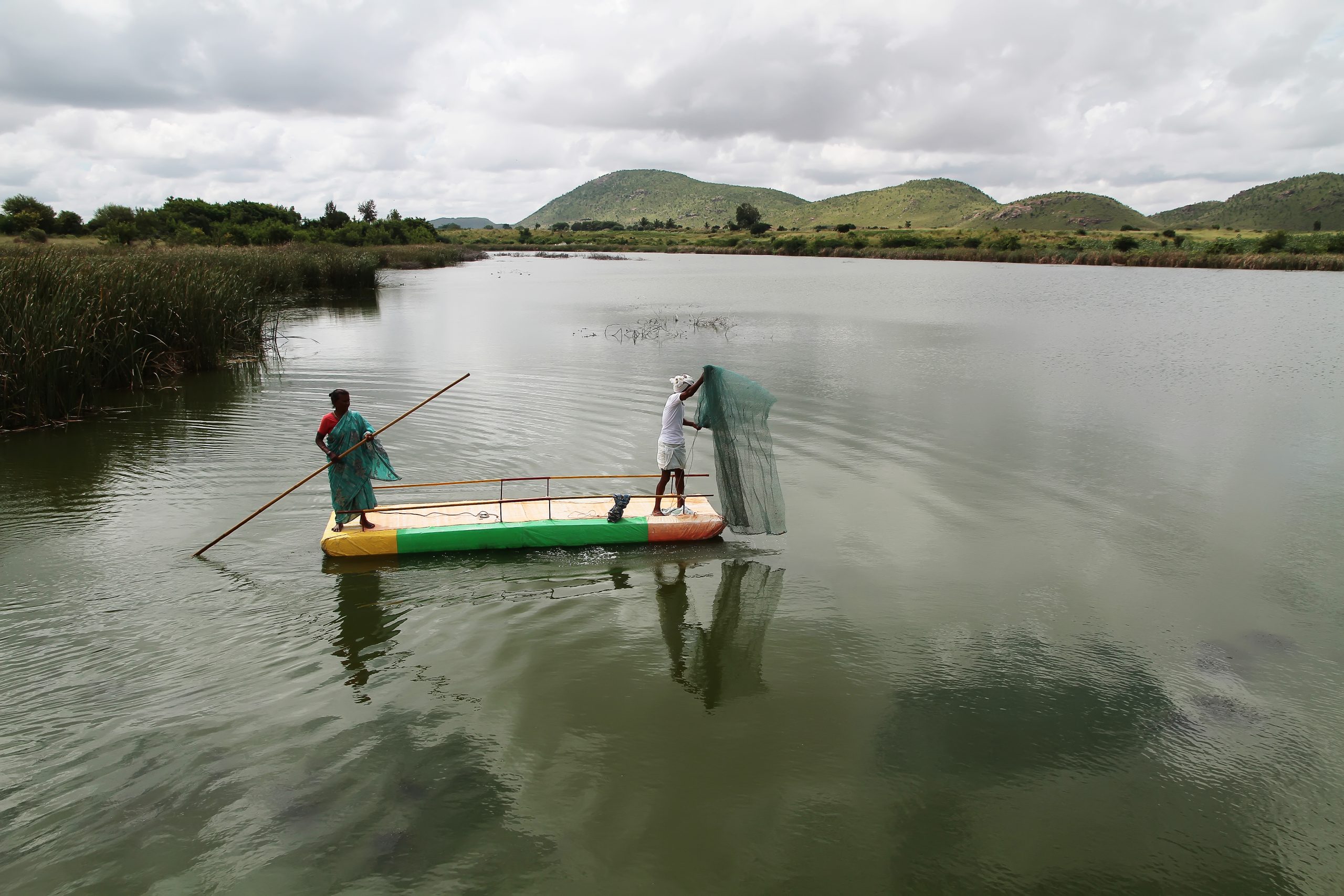
The construction of small self-managed reservoirs brings life to the most impoverished farmers and is a development model to be followed in semiarid regions.© Javier Biscayar_FVF
”Our family had 4.5 acres of land. We dug a well a few years ago but it ran dry. Thanks to the new reservoir and rainfall our well has filled with water. We want to finish planting peanuts on all the land we have.” Radhamma is a farmer who lives in Andhra Pradesh, one of the regions in India most affected by the hydric and psychologic stress that comes with the dependence of monsoons. Just like her family and the neighboring farming families, Radhamma has spent decades fighting the infertility of land and the permanent threat of the lack of water. Now, a small reservoir opens a door to a much safer future.
Since the great drought of 1984-1986, extreme poverty became endemic, severely affecting the western area of Andhra Pradesh. Many families, urged by debts, were obliged to migrate to cities, where most of them ended up in overcrowded slums without the minimum conditions to have a dignified and healthy life.
Now Radhamma sees that water is flowing from her well again. The aquifer that fed it has filled again. The ghost of migration has disappeared. She can diversify her crops now and not depend only on peanuts. Water from monsoons, increasingly irregular, fills the small reservoir built by the Vicente Ferrer Foundation and the We Are Water Foundation near their farming land. This water has recharged the water table and has stopped the desertification of the soft slopes that surround the reservoir. Now, the violent runoff from monsoon storms escapes less and less and does not carry away fertile soil.
This is the power of a small reservoir of 48,300 m3, such as the one in the project of D.K.Thanda4: it covers an area of influence of 21 wells, allowing the irrigation of 49.37 hectares. And the benefits for farmers pile up, as explained by Lakshmidevi, one of the farmers who has witnessed the resurrection of their wells:“We had an extension of 4.85 acres of land but could only farm 1.5 acres of land due to the lack of irrigation water from our well. Now we do have it and we have been able to give work to some of the farmers of the village.”
An essential transformation
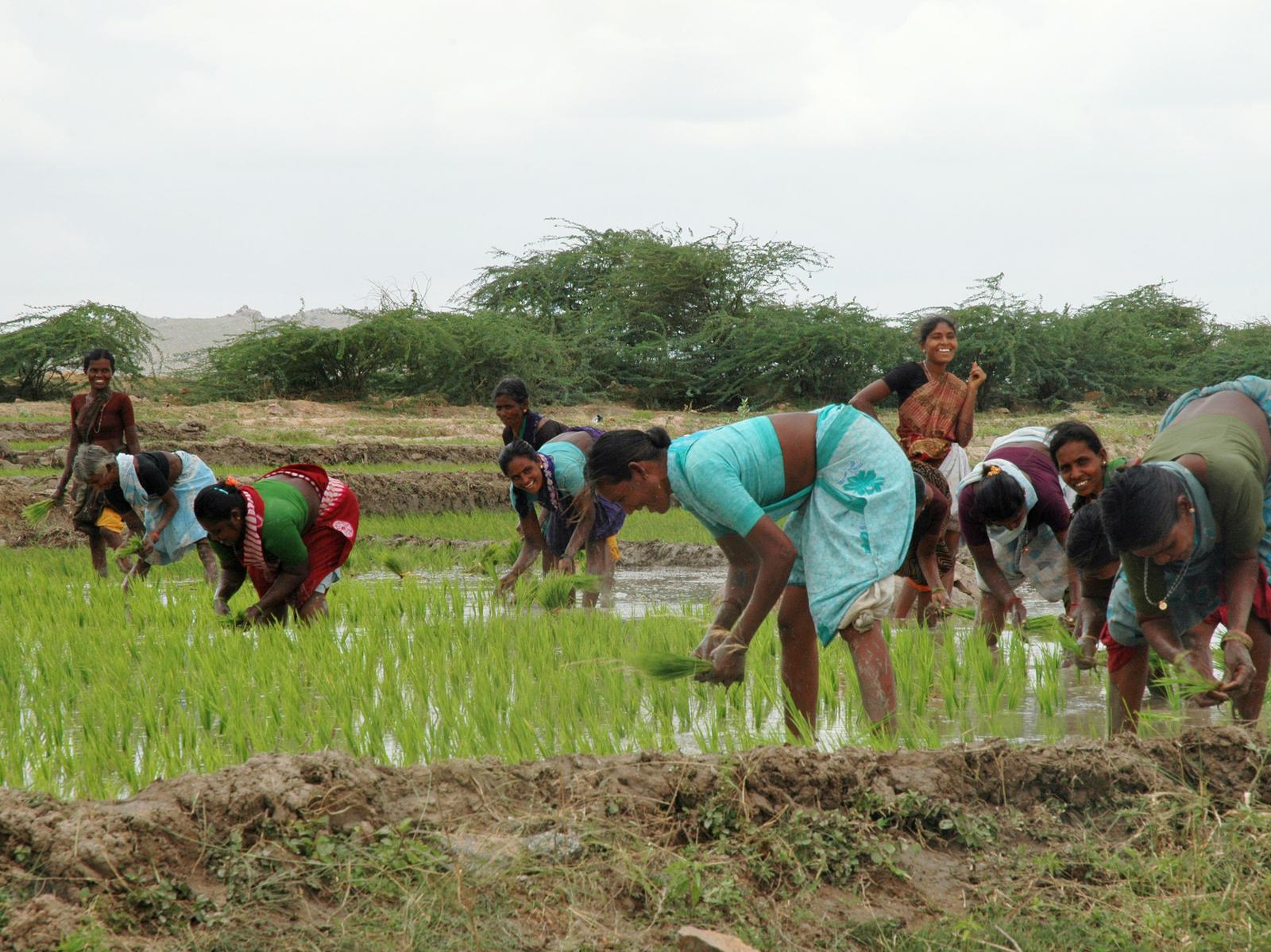
The sustainable management model led by the community have been the core idea of the collaboration of the We Are Water Foundation and the Vicente Ferrer Foundation© FVF
Small reservoirs have an enormous power of transformation; they allow farmers to water the herd and also enable aquiculture. In addition, they are an important factor of social cohesion for the community. The management of its construction by the farmers themselves is another benefit that proves to be transformative for the region in the long run. Rural communities have been traditionally excluded from decision-making processes in the management of their entire territory and their empowerment to this regard is a crucial change for their sustainable future. The community assumes every project as its own, organizes itself for the construction of the infrastructures and the management of water and takes on the responsibility of its efficient use.
The recovery of these infrastructures, which date back to India’s ancestral culture, and this sustainable management model led by the community have been the core idea of the collaboration of the We Are Water Foundation and the Vicente Ferrer Foundation. Starting with the first reservoirs that were built in Ganjikunta in 2011 and Girigetla in 2014, and the recently finished in Settipalli and D.K.Thanda4, around 5,500 farmers have improved their standard of living and are more resilient to droughts and floods; they are the seed of rural transformation in India.
Efficient irrigation, a priority
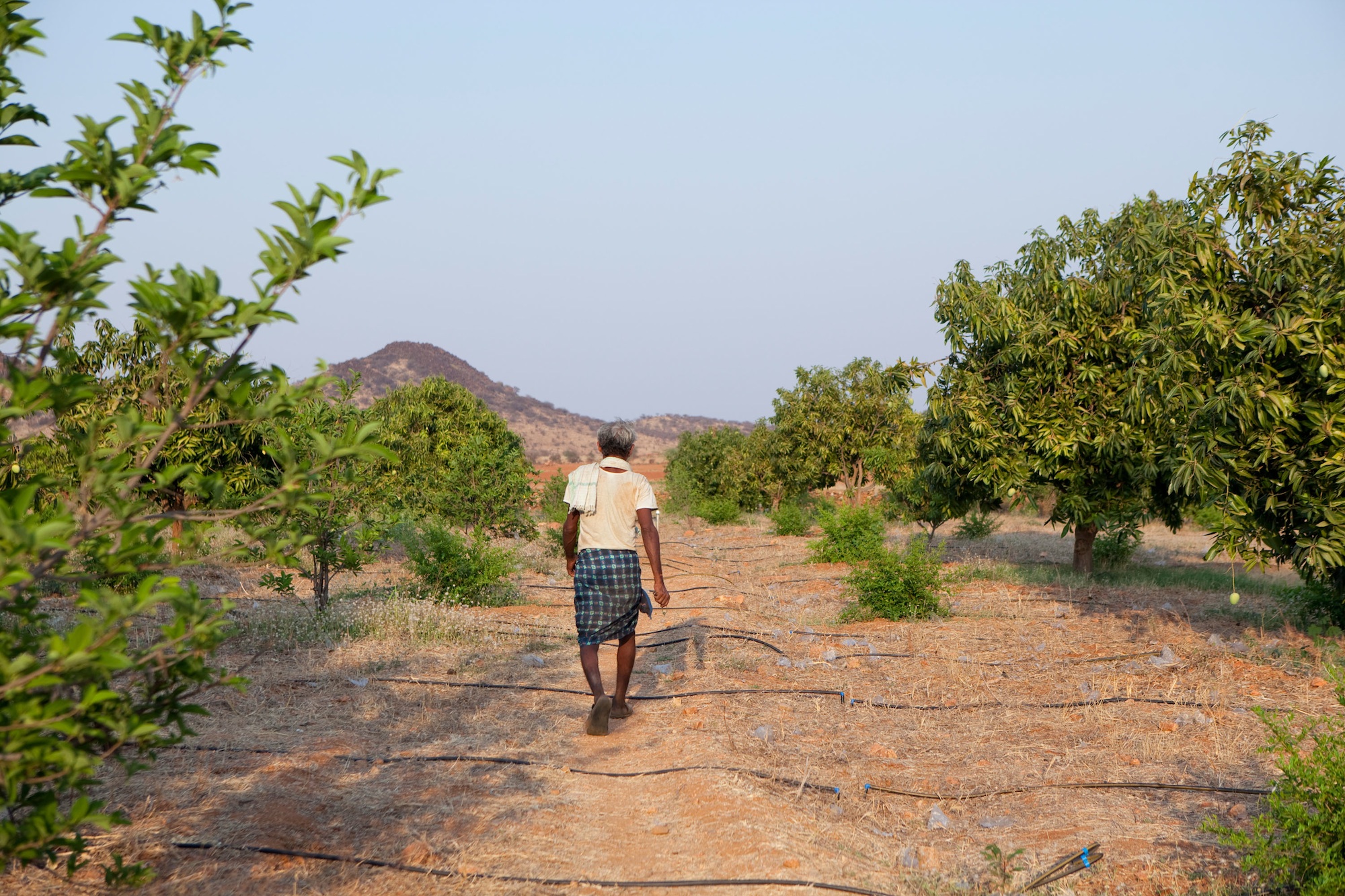
The development of horticulture through drip irrigation systems saves up to 75 % of water, which can be used to irrigate new farming areas© Juan Alonso_FVF.
These dams have provided a capacity of 171,000 m3 of reservoir water that can irrigate 130 ha of farming land. But in order to achieve sustainable farming we need more than just the access to water, it is essential to increase the efficiency of the irrigation systems and an adequate management of wells, something that is essential in India and the rest of a planet threatened by climate and food insecurity.
The development of horticulture through drip irrigation systems saves up to 75 % of water, which can be used to irrigate new farming areas. The installation of new solar-powered irrigation systems and the adequate management of wells are essential for a country whose groundwater reserves are being depleted, as extraction has increased sevenfold in the last 50 years and, recently, due to droughts caused by the climate crisis. Nowadays, 61.6 % of the water for irrigated land in India has an underground origin; according to the World Bank, the second most populated country in the world extracts every year more water than the United States and China combined, but its productivity is lower.
It is a situation that needs to change. The Foundation’s projects have been in line with the roadmap recommended by FAO and UN Water for semiarid regions of the planet and they have developed solutions that are embraceable by the farmers with less resources. Around 85,000 farmers have benefitted from efficient irrigation systems and well management in seven projects in the most disadvantaged regions of the country. And the accumulated experience is a universal reference to face the climate crisis.
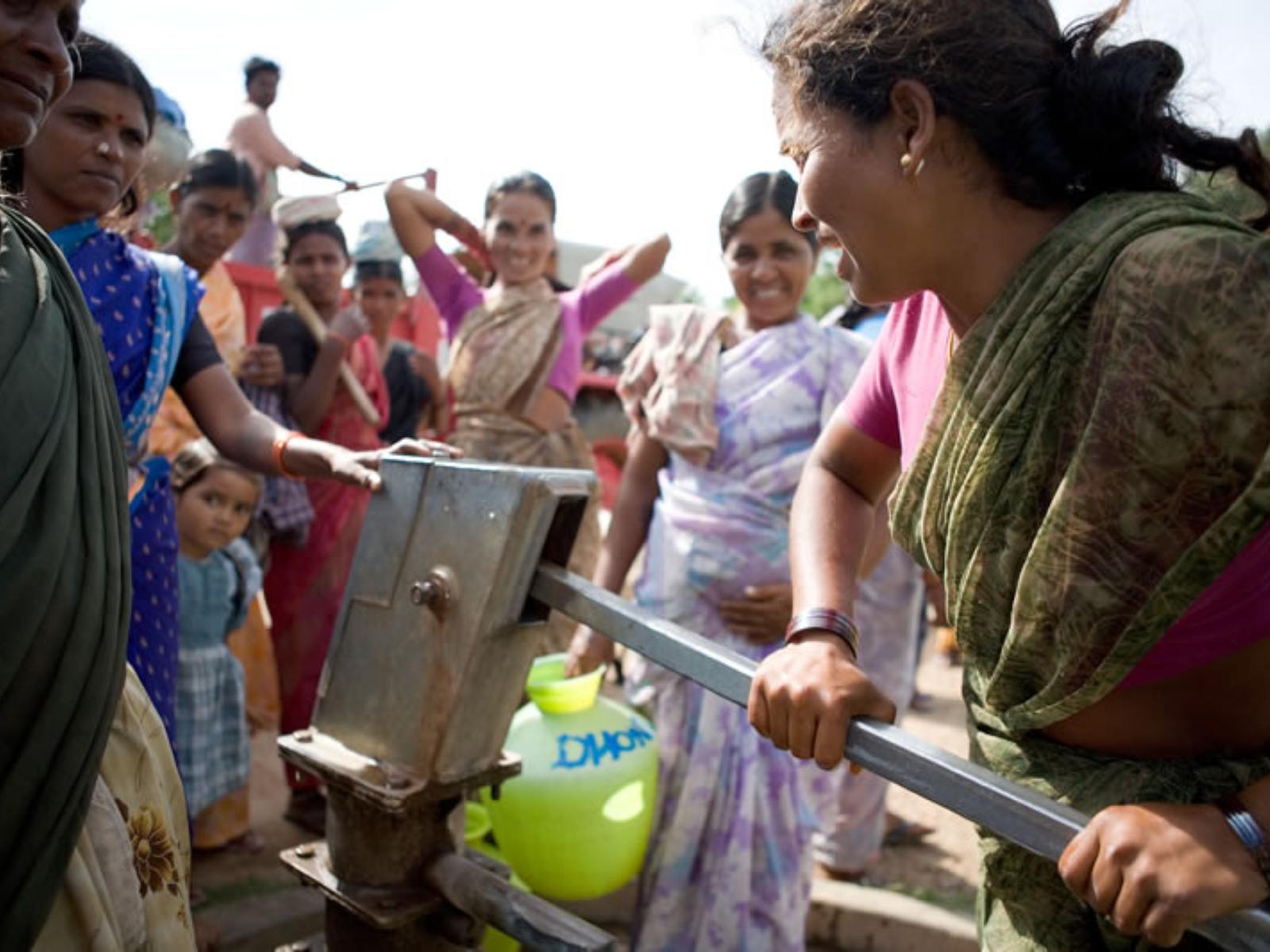
In order to achieve sustainable farming we need more than just the access to water, it is essential to increase the efficiency of the irrigation systems and an adequate management of wells. © Carlos Garriga We Are Water Foundation
A model to look up to
In India, as it happens in most overexploited aquifers all around the world, the decrease in rainfall and deforestation are determining factors that go hand in hand with the increase of water extraction. Food security and the preservation of natural capital represented by farmed land requires solutions with a global and integrating vision, and India is a reference to be considered and a model to look up to. While the most humid areas of the country depend on the summer monsoon for the recharge of aquifers, the northern regions are fully located in the so called subtropical belt (adjacent to the 30ºN parallel), an area in which desertification is advancing, as it happens in the southern Mediterranean, California and Mexico, in the northern hemisphere; and in South Africa, Namibia, Madagascar and Mozambique, Chile, Argentina and Australia, in the southern hemisphere.
Climate change is presenting bad omens for the recharge of Indian aquifers. The forecasts of the Intergovernmental Panel on Climate Change (IPCC) point to a decrease in rainfall and an increase in the number of days the summer monsoon is interrupted. They also predict an increase in the melting of the Himalayan glaciers that bring water to the enormous basin of the River Ganges, where an estimated 8 % of the world’s population lives. This same situation is taking place in the river basins that depend on alpine ice, as is the case, for instance, in the Andes mountain chain, the Rocky Mountains and the Kilimanjaro massif.
The evolution of Indian agriculture is a reference to achieve food sustainability in our planet. The challenges of safeguarding aquifers and efficient irrigation imply intelligent crop management that fully eradicates the economic risk of monoculture and does not degrade the land. The empowerment of farmers is both cause and effect of their increased resilience towards droughts: their self-management capability is the base. We must promote it in India and all around the world.


